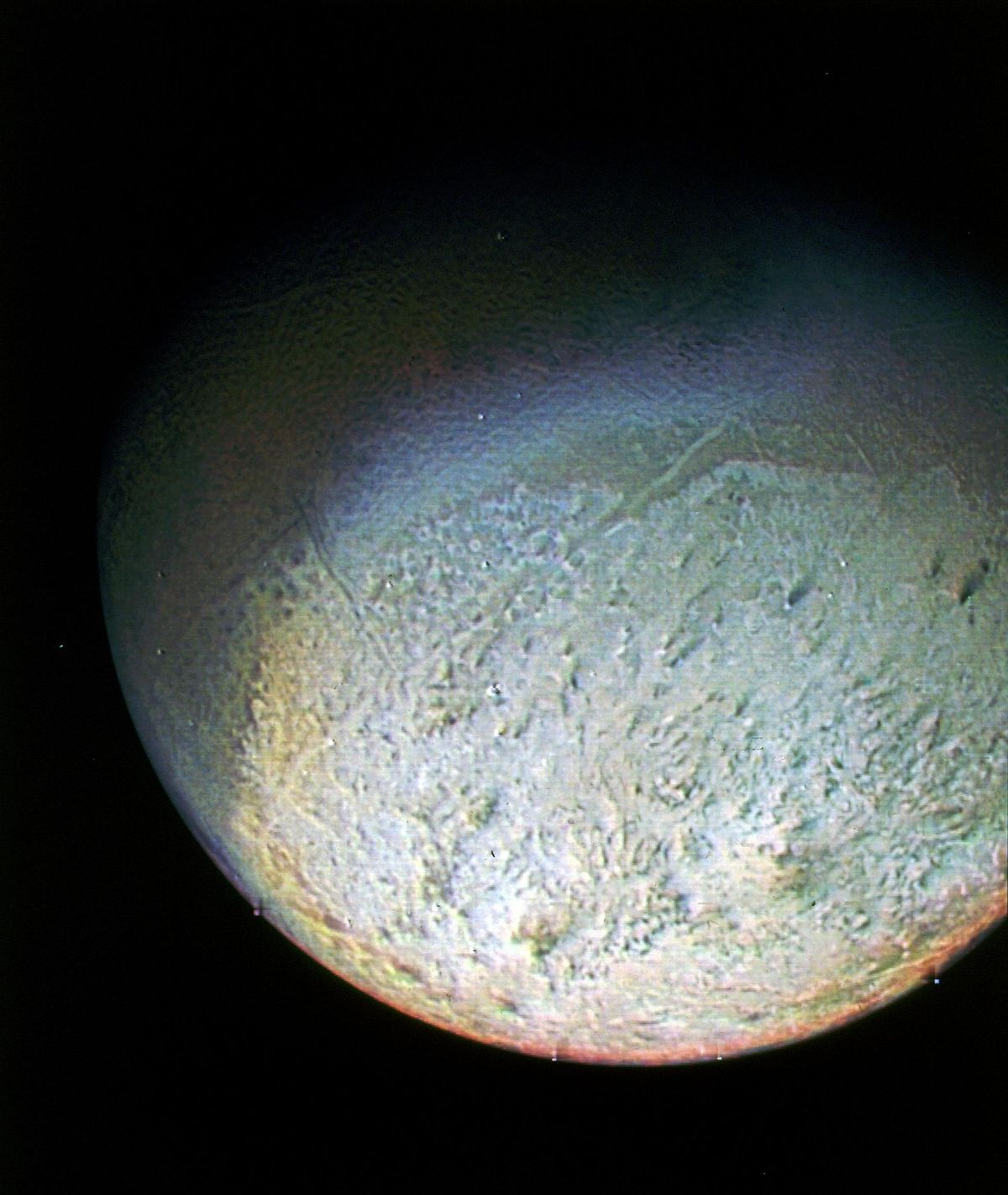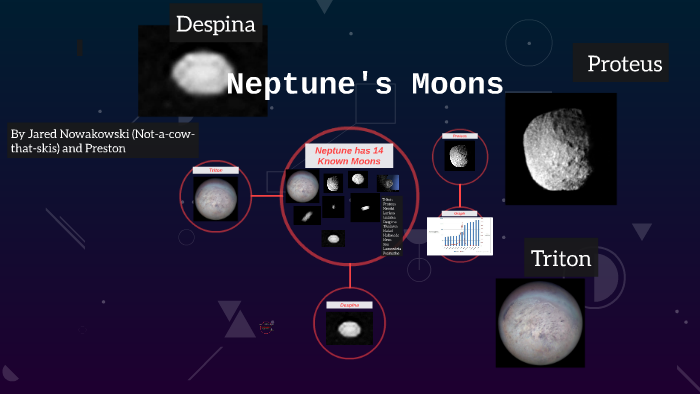

All of these moons, except Proteus and Hippocamp, are within Neptune-synchronous orbit. There are seven regular moons, also described as inner moons, which are Proteus, Hippocamp, Larissa, Galatea, Despina, Thalassa, and Naiad. Irregular (captured) moons are shown in grey prograde in light grey and retrograde in dark grey. Neptune has 13 known moons, though most are small and orbit closer to Neptune than its rings. Neptune contains both regular and irregular moons. Triton, which is not only massive enough for its surface to have collapsed into a sphere, but is comparable in size to our own moon, is highlighted in purple. The Neptunian moons are listed here by its orbital period, from shortest to longest. Also Halimede was also calculated that the moon had a high chance of colliding with Nereid in the past. Both moons seemed to have the same gray colors. Halimede, discovered in 2002, was perhaps a piece of Nereid when the moon was hit with another object.

The pair was then captured but Triton survived and the other object being affected by Neptune's gravity. What must have happened was that Triton was part of a binary pair with another unknown celestial body. While many astronomers agree that Triton was not an original moon of Neptune, some think that Triton was captured in a "three-body-encounter". The largest, Triton, accounts for more than 99.5 of the mass in orbit around Neptune. Other scientists think that when Triton was captured by Neptune, Triton's mass and odd orbit caused Neptune's original moons to be destroyed by gravity, only to be reformed after Triton formed a stable orbit. As of July 2019, Neptune has 14 known moons.

Many astronomers and scientists think that Neptune's inner moons were not original bodies that formed with Neptune, but were remains of debris from Triton that slowly came together. They take about 25 years to make one orbit and are 125 times more distant from Neptune than our Moon is from Earth. Two moons, Psamathe (discovered in 2002) and Neso (discovered in 2003), are unusual because they have the largest orbits for any moons discovered in the solar system so far. Triton was discovered by British astronomer William Lassell on October 10, 1846, just 17 days after the discovery of Neptune. Triton, the largest moon of Neptune, has a retrograde orbit (which means Triton orbits or moves the opposite way from how Neptune spins). Here is a table of Neptune's Moons with additional information.Neptune has moons which have unusual orbits. Voyager 2 discovered six additional moons. The innermost seven (small) moons of Neptune, from Naiad through Proteus, are likely the only Neptunian moons left over from Neptune’s formation and that original circumplanetary disk. Role in episode Every 100 years, Neptune's moon appears out of a volcano. ' Description It is a lime green, glowing moon with three dark green spots that appear to represent a distorted smiley face. There is an excellent resource for more information about Neptune's Moons on the NASA website. Neptune has two large moons that are easily seen from Earth, Triton and Nereid. Neptune's moon is a moon that appears in the episode ' Feral Friends. Particularly for the five outer moons, some of this information is conjectural, and subject to change. Triton is so much larger than the other moons that it makes up about 99.7% of the total mass of all the moons.īelow, a table lists the known moons, with information about their orbits and diameters. Unfortunately, for Triton, its orbit is decaying, and in the relatively near future, perhaps several million years, it will disintegrate, and could form a new, more distinct ring system. Triton is in a synchronous orbit around Neptune, meaning that, like our own Moon, the same side faces Neptune. It is the only large moon in the Solar System that has a Retrograde Orbit. It was once, possibly, a Kuiper Belt Object as it is very similar to Pluto. This leads astronomers to believe that it was captured long in the past, as virtually all natural satellites, formed along with their parent body, orbit in Prograde Orbits. Triton, the largest at more than 2,700 km in diameter, and the one first discovered soon after Neptune itself on October 10th 1846 by the English astronomer William Lassell, orbits in a Retrograde Orbit, in the opposite direction to most of the other moons. The 14 moons of Neptune can be divided into regular, irregular and unusual irregular moons. The first moon discovered was Triton, just 17 days after Neptune itself was discovered. The solutions in this page may answer other puzzle clues. If you are presented two or more answers, then look at the most recent one which is the last row in the answers box. They have all been named after water deities in Greek mythology. One of Neptunes moons NYT Crossword Clue Answers are listed below and every time we find a new solution for this clue, we add it on the answers list highlighted in green. Neptune has 14 identified moons, as at September 2013, named for minor water deities in Greek mythology. A total of 14 known moons surround Neptune.


 0 kommentar(er)
0 kommentar(er)
